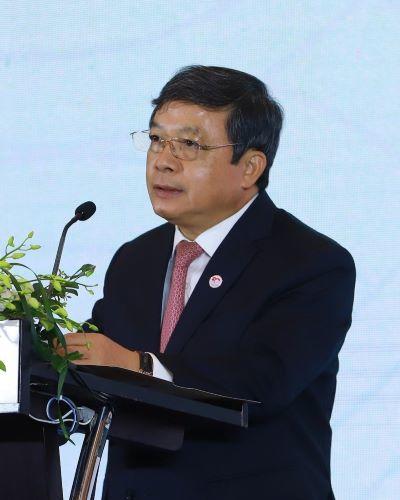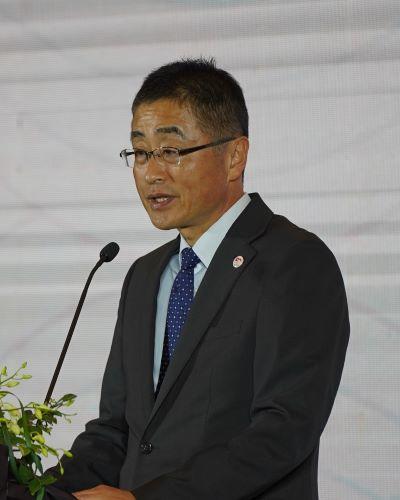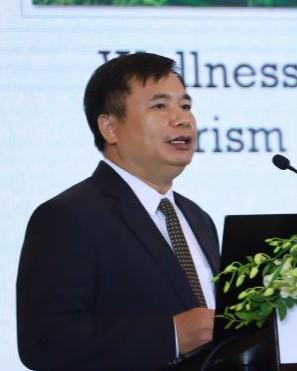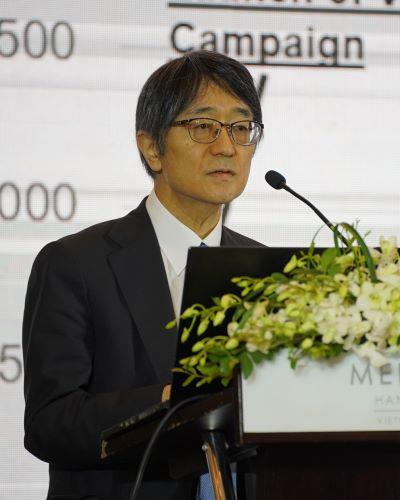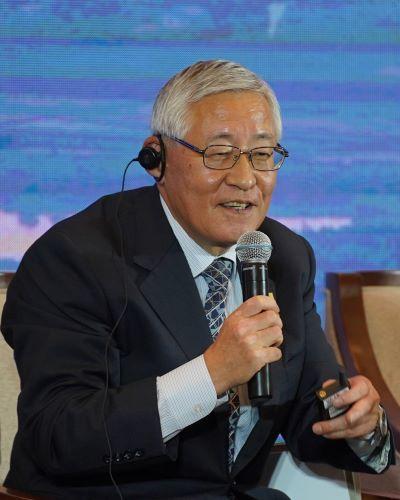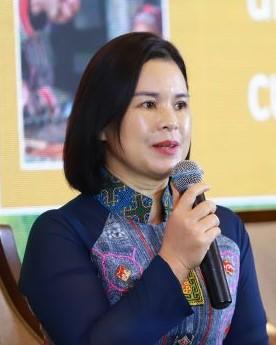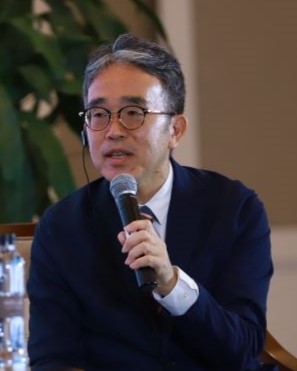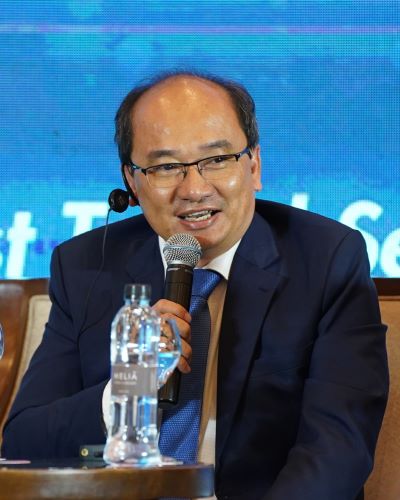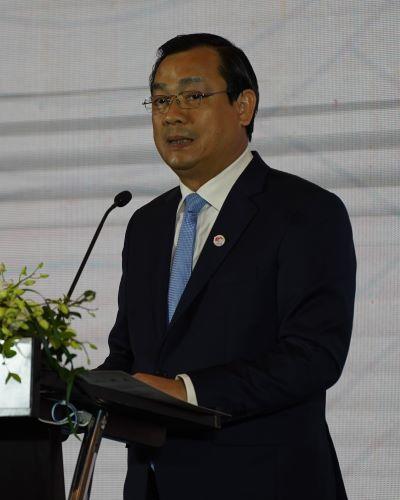Overtourism at Major Destinations and Development of Satellites
-Vietnam and Japan working towards Sustainable Tourism-
- Symposium etc.
- Tourism
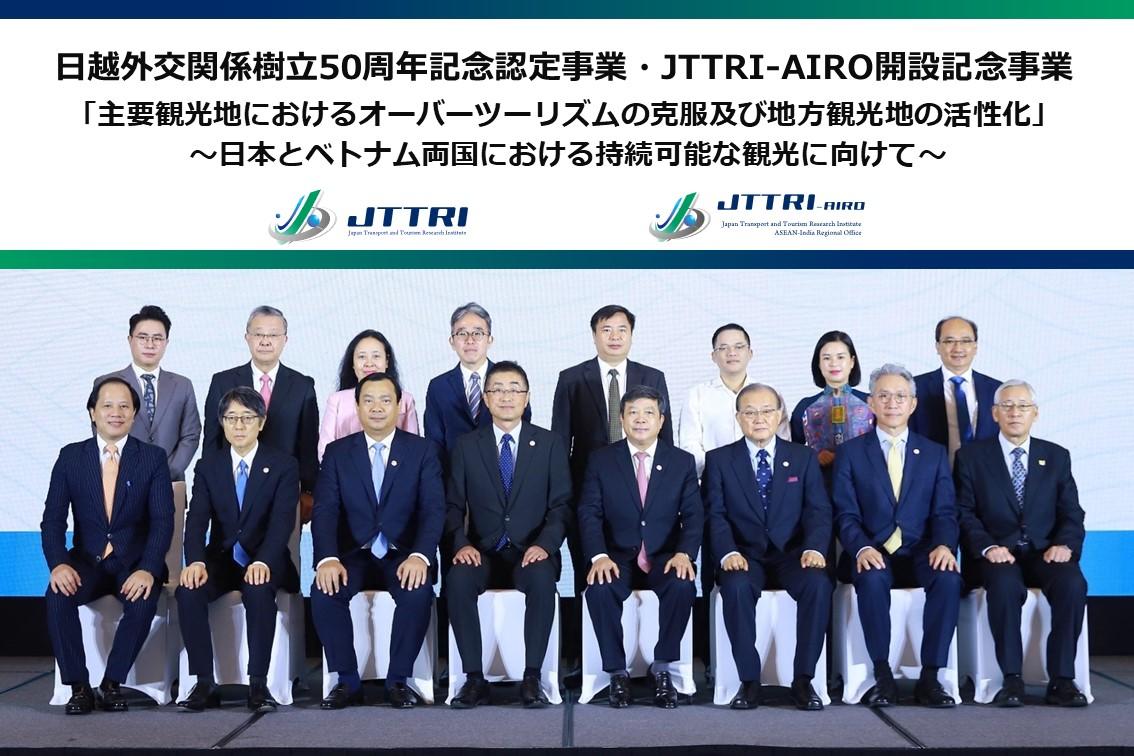

| Date / Time | Mon, Oct 23,2023 |
|---|---|
| Venue | Melia Hanoi Hotel Vietnam, Grand BallRoom 1st floor and ZOOM webinar (Hybrid event) |
| Theme | 1.Opening Remarks ・Mr. SHUKURI Masafumi Chairman, Japan Transport and Tourism Research Institute (JTTRI) 2.Greetings from Guest of Honor ・H.E. Mr. DOAN VAN VIET Deputy Minister of Culture, Sports and Tourism of Vietnam ・H.E. Mr. WATANABE Shige Deputy Cheif of Mission, Minister of Embassy of Japan in Vietnam 3.Special Lecture ・Mr. ATSUMI Gamo President, Japan National Tourism Organization (JNTO) ・Dr. NGUYEN ANH TUAN Director of institute for Tourism Development Research Ministry of Culture, Sport and Tourism 4.Panel Discussion and Q&A Moderator ・Mr. TRINH LE ANH Head of Event Management Department, Faculty of Tourism, University of Social Sciences and Humanities, Vietnam National University, Hanoi Panelist ・Mr. NGUYEN HUU Y YEN Chairman of Saigon Tourist Travel Service Co., LTD ・MA. HOANG VUONG Head of the Culture and Information Department of Sa PA town, Lao Cai Province ・Mr. KATAYAMA Kenya Mayor of Niseko Town, Hokkaido ・Mr. SAWANOBORI Tsuguhiko Manager of Jalan Research Center 5.Closing Remarks ・Ph.D NGUYEN TRUNG KHANHC Chairman of Vietnam National Authority of Tourism |
Event Summary
Challenges such as over-tourism at major destinations and the development of tourism satellite city were already apparent before the global outbreak of COVID-19. Japan and Vietnam have discussed how both parties should take actions to address these challenges now that tourism is gradually recovering from the pandemic.This year we are celebrating the 50th anniversary of the establishment of diplomatic relations between Japan and Vietnam. This spurs us to continue working towards "sustainable tourism" and at the same time further develop two-way exchanges and mutual understanding between our two countries.Main related SDGs
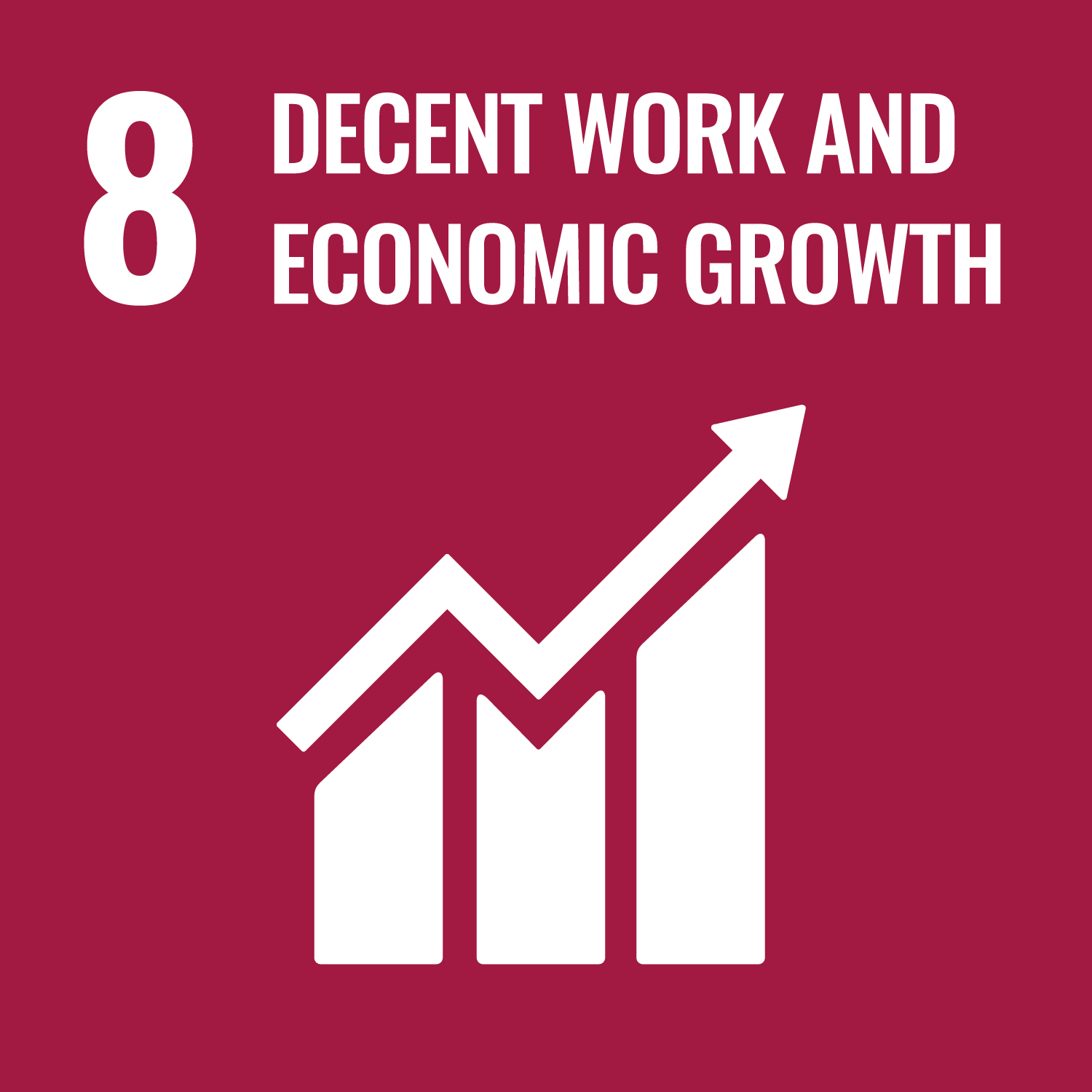
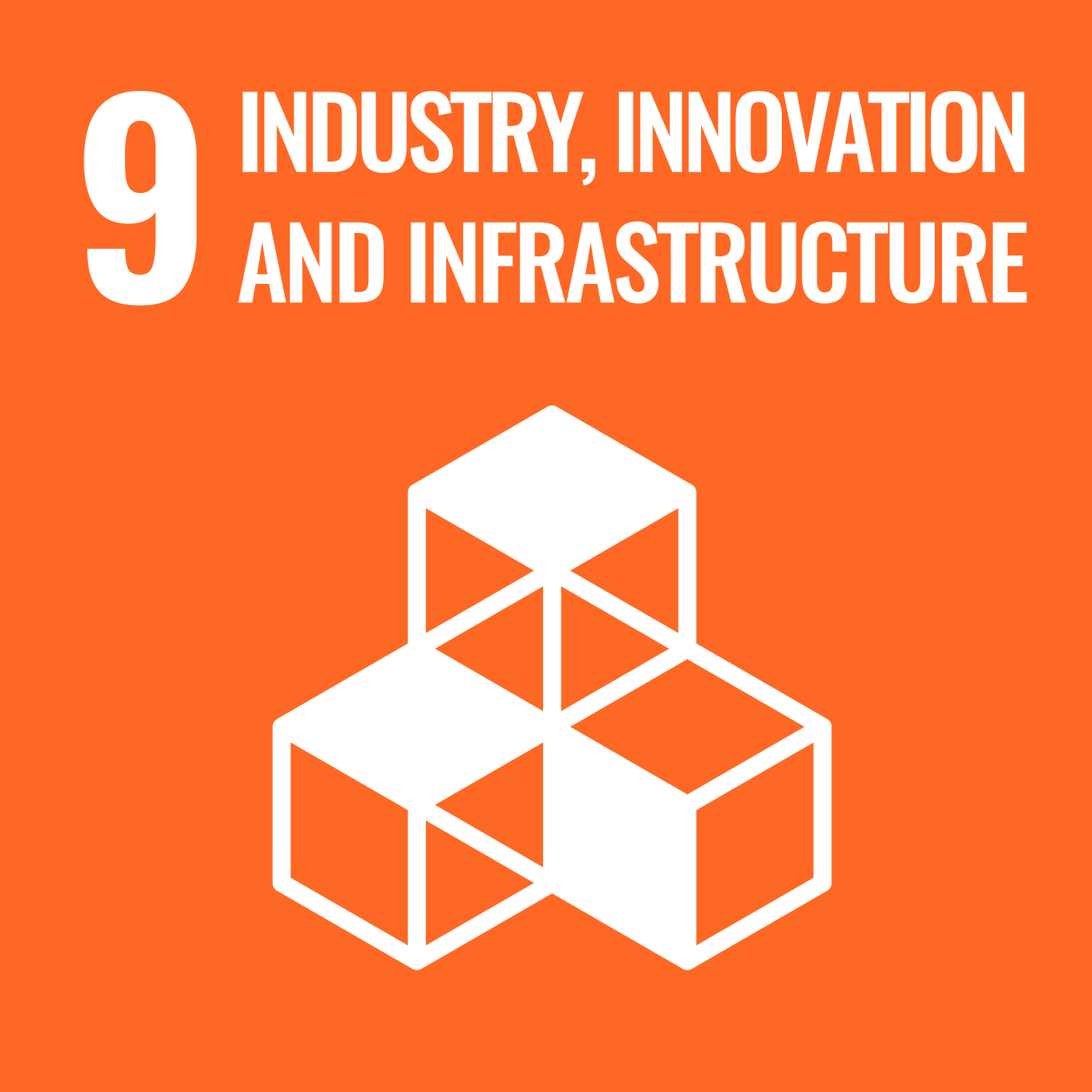
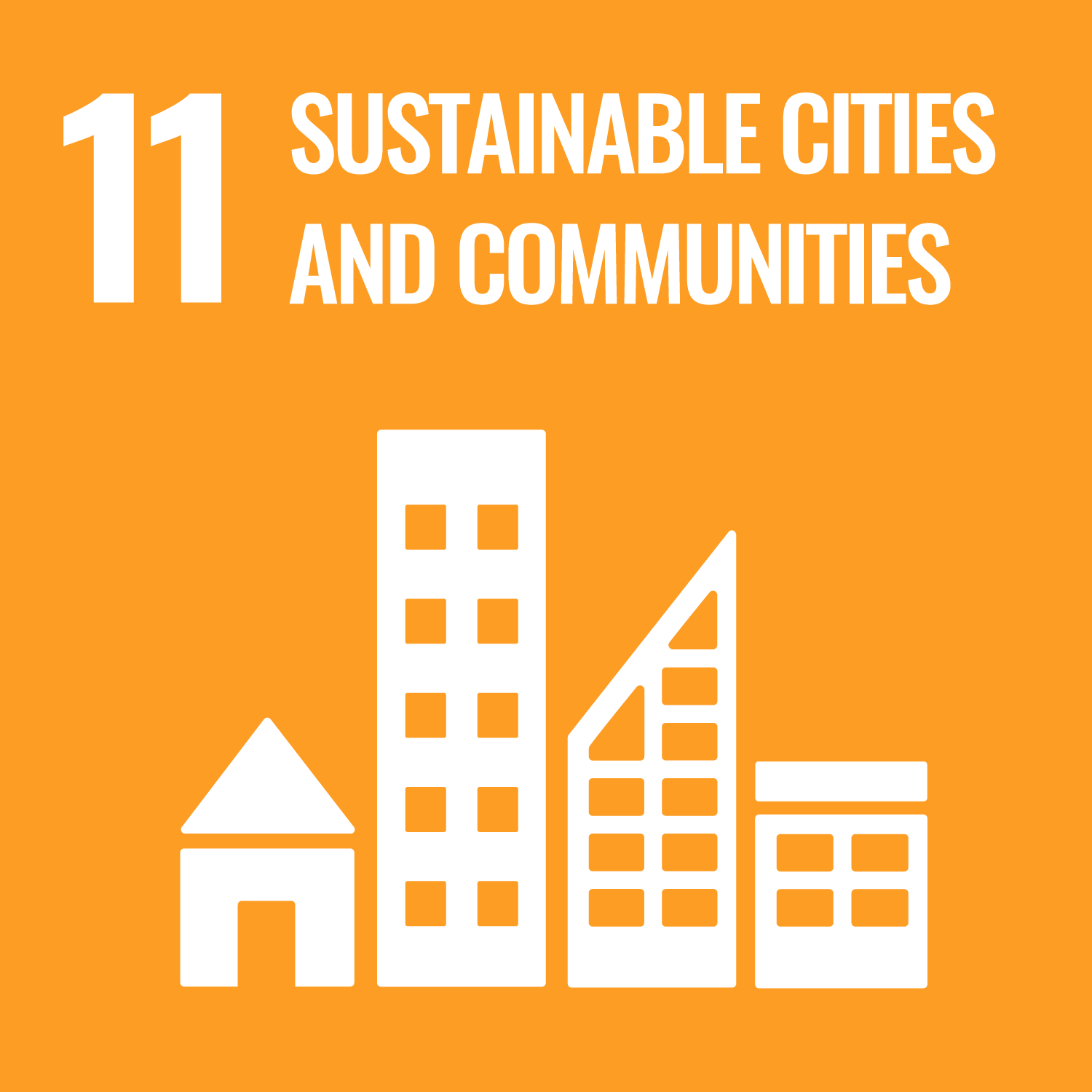
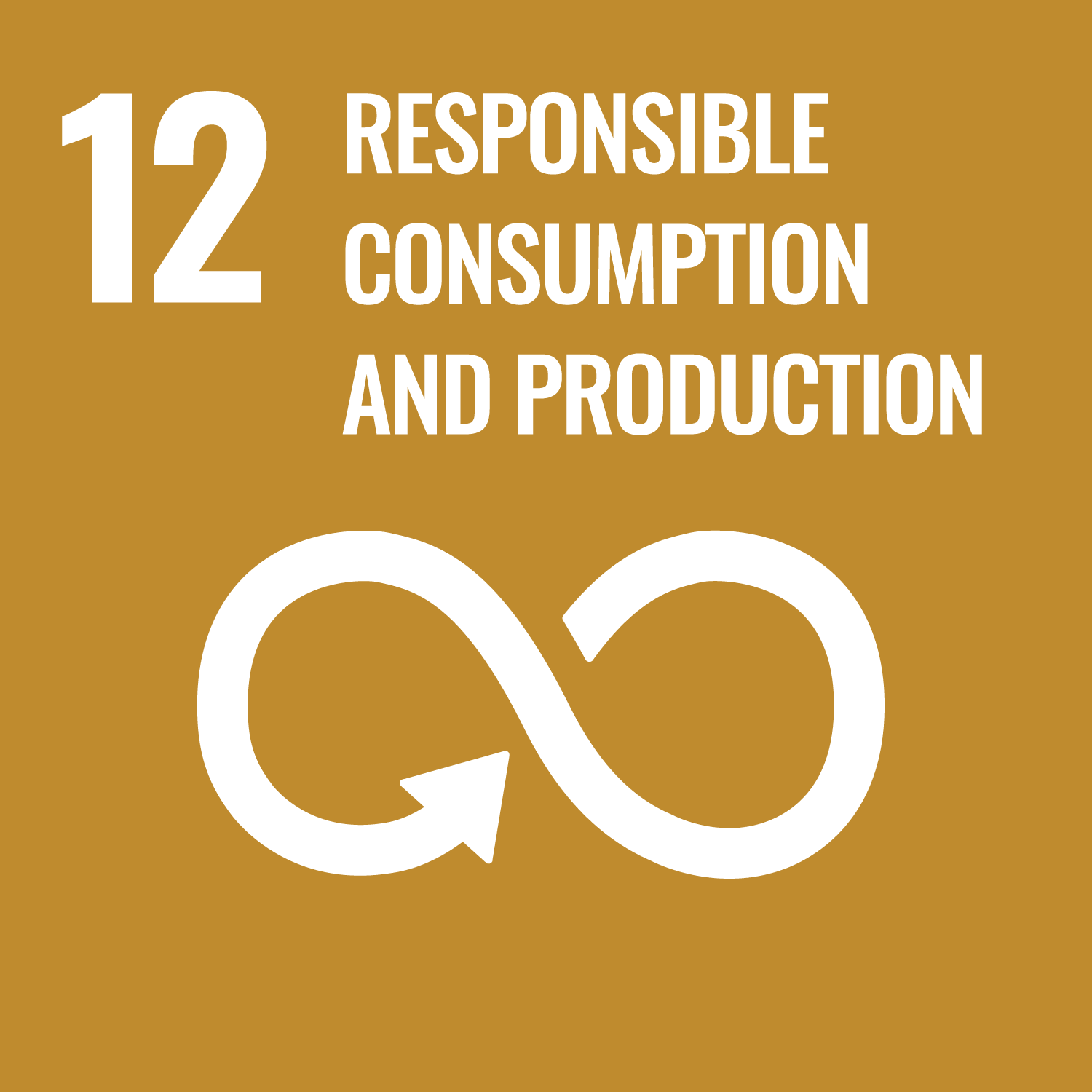
Program of the seminar is as the following
| Opening Remarks |
Mr. SHUKURI Masafumi
Chairman, Japan Transport and Tourism Research Institute (JTTRI) 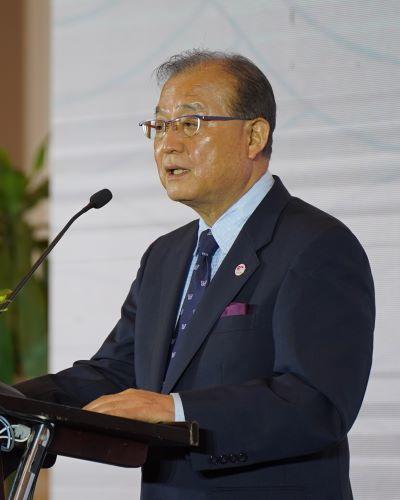 Opening Remarks bio |
|---|---|
| Greetings from Guest of Honor | |
| Special Lecture | |
| Panel Discussion and Q&A |
<Moderator>
Mr. TRINH LE ANH |
| Closing Remarks |
Ph.D NGUYEN TRUNG KHANHC |
Outline of the seminar
1.Greetings from guest of honor
(1)Doan van Viet, Deputy Minister of Culture, Sports and Tourism of Vietnam
Vietnam and Japan established formal diplomatic relations in 1973 and have since built history of mutual cooperation and development over half a century through bilateral human networking. Japan is Vietnam’s key partner in economy, trade, investments, tourism and labor affairs. Bilateral cooperation has been strongly promoted in all areas including cultures and tourism, producing numerous favorable outcomes. Vietnamese tourism has made a powerful recovery from the impact of COVID-19. The number of inbound tourisms visiting Vietnam topped 8.9 million in the first nine months of 2023. This included visitors from Japan, totalling 415,000, which was among the Top 5. The number of domestic tourisms has reached 93.5 million, generating gross tourism revenue of 536 trillion Vietnamese dongs. This is a wonderful achievement that reflects the efforts of the tourism industry as a whole, and contributes to developing national economy, guaranteeing citizens’ livelihood, raising the standard of education and improving Vietnam’s image.
However, the development of tourism and the sudden surge of domestic and international visitors are causing overtourism in tourist centers including Sa Pa, Hanoi, Quang Ninh, Ninh Binh, Sam Son, Hoi An, Da Nang, Nha Trang, Da Lat, Ho Chi Minh and Phu Quoc Island. The current situation is having direct ramifications on visitor experiences, quality of tourism merchandizes, tourism services, the environment, ecosystem, security and safety.
In today’s symposium, I hope to see discussions between Vietnamese and Japanese tourism experts on relevant themes to develop practical initiatives and find solutions. We would love to hear valuable opinions from economists, experts and academics from both Vietnam and Japan.
I hope this event will help further enhance friendly and cooperative ties between Vietnam and Japan.
(2)Shige Watanabe, Deputy Chief of Mission, Minister of Embassy of Japan in Vietnam
Marking the 50th anniversary of the establishment of diplomatic ties this year, Japan and Vietnam enjoy stronger ties than ever before in all areas including politics, economy and human networking. The “Princess Anio” opera, a joint production of Japan and Vietnam, premiered last month, attended by Japanese Crown Prince Akishino and Crown Princess Kiko. The opera depicted the 400-year-old love story set in Hoi An between a Red Seal ship trader from Nagasaki and a princess of Vietnam’s Nguyen Dynasty. It was a fantastic production symbolizing the exchange between Japan and Vietnam dating further back than just the last half century.
The Japanese government positions tourism as a strategic industry and implements a series of initiatives including developing tourism-oriented environment in Japan and having JNTO and other organizations promote Japan in and outside Japan in order to promote inbound tourism. This year, the number of Vietnamese people visiting Japan is on its way to set an all-time high record after passing the pre-COVID record of 500,000 in 2019.
At the same time, overtourism is emerging as an issue at major tourism destinations across Japan. The Japanese government is exploring overtourism countermeasures, compiling a set of measures just last week. Its another task of “bringing tourists to regional destinations” is important not only to revitalize regional economies but also to address overtourism.
A record 950,000 people visited Vietnam from Japan in 2019 before the COVID-19 pandemic. I am not alone in being in love with Vietnam’s incredible landscapes and foods. There is no doubt that Vietnam will emerge as one of tourism superpowers in the near future. Overtourism and the need to bring visitors to regional destinations are two urgent challenges that need to be overcome. Sharing knowledge and insight in this symposium is highly significant for the two countries.
2.Keynote lectures
(1)Nguyen Anh Tuan, Director, Institute for Tourism Development Research (ITDR)
Today’s state of overtourism, which has emerged since Vietnam’s declaration of its commitment to become the world’s major tourism destination, is a major issue that needs to be overcome and resolved. Vietnam’s tourism development strategy sets the goal of developing tourism as a main part of the nation’s economy by 2030.
First perspective: Developing tourism into a key economic sector
Second perspective: Developing sustainable tourism through national security
Third perspective: Preserving and promoting the value of Vietnam’s cultural assets and cultural identity
Fourth perspective: Incorporating DX and HR development to develop professional, high-quality and effective tourism
Fifth perspective: Developing domestic and international tourisms simultaneously
These five perspectives are clearly expressed when the strategy is implemented in Vietnam.
Vietnam’s main tourism commodities are (1) sea- and island-based tourism commodities, (2) cultural tourism commodities, (3) urban tourism commodities and (4) eco-tourism commodities. Across the country, companies are developing tourism products based on these key commodities and encouraging investments to enhance the appeal of Vietnamese tourism.
In the post-COVID Vietnam, tourism is one of the industries that are expected to make fast recovery. The Vietnamese government has introduced policies ranging from easy visa applications, national and regional tax cuts, credit policy update and business management support to contribute to significant recovery of the tourism industry by September this year. Even during the pandemic, Vietnamese tourism industry won an international tourism award.
With on-going strong tourism growth, Vietnam has welcomed some 9 million international visitors over the first 9 months of this year (surpassing the annual target of 8 million). The UNWTO’s 2018 forecast puts Vietnam among Top 10 countries that are expected to record the highest growth in the number of visitors.
At the same time, the tourism industry is facing the issue of overtourism at major tourism destinations, requiring a solution for sustainable development. In the peak season, most major tourism centers in Vietnam (Hanoi, Da Nang, Ho Chi Minh, Quang Ninh and Khanh Hoa) suffer traffic congestion, causing significant strain on airports, wharfs and tourism sites.
Causes of overtourism are:
Post-COVID tourism boom
Seasonal nature of tourism activities (peak season / off-peak season)
Infrastructure limitations
Unless the issue of overtourism is managed properly, firstly, the value of tourism experiences will decline. Secondly, the quality of goods and services offered at travel destinations drop, preventing visitors from receiving goods and services of fair value. Thirdly, tourism sites’ identity value and image will decrease, undermining their competitiveness.
For a theme of this symposium, we have proposed “Development of Satellite Destinations” as a solution. Regional tourism centers should be developed to reduce the strain of central areas such as Hanoi and Ho Chi Minh. The first aim of developing satellite destinations is to disperse visitors away from major sites, and the second aim is to create and increase jobs in regional Vietnam. Other aims include building regional infrastructures to raise efficiency in utilizing tourism resources, and maintaining indigenous people’s cultural value to boost the economic value of regional destinations. These approaches can promote potential value of tourism.
Challenges in developing satellite destinations include:
・Low awareness within the community
・Ineffective harmony
・Infrastructure connectivity (not meeting the needs of tourism development)
・Difficulty in gaining investment capital
・Issues surrounding land use planning and site acquisition for tourism development
・Vulnerability in inter-regional connection and coordination
Suggested solutions are:
・(1) Implement policies that are effective in developing satellite destinations and establish a favorable investment environment
・(2) Promote cooperation between major and satellite destinations
・(3) Encourage major destinations to support the development of satellite destinations
・(4) Promote cooperation between the public and private sectors in investments for improving infrastructures of satellite destinations
・(5) Implement policies that encourage the development of high-quality human resources and local participation in tourism development at satellite destinations
・(6) Focus on developing infrastructures such as energy, water resources, and treatment of waste matters and wastewater
Finally, it is important to advertise and promote satellite destinations, and so is coordination between major and satellite destinations. Then, we should build a network for promoting a common image for tourism sites, encouraging product diversity and reducing the workload of major destinations.
These reflect our findings from research conducted over the last few months concerning overtourism.
(2)Atsumi Gamo, President, Japan National Tourism Organization (JNTO)
The Japanese government launched the Visit Japan campaign in 2003 and enacted the Tourism Nation Promotion Basic Law in 2006 to promote inbound tourism. As a result, the number of international visitors to Japan reached a record 31.88 million in 2019. However, the spread of COVID-19 dealt a serious blow to the Japanese tourism industry. Easing of border control measures in 2022 led to the recovery of international visitor numbers, recovering to 85.6% of the 2019 level in August 2023.
In March 2023, the government adopted a new (4th) Tourism Nation Promotion Basic Plan, setting out the directions of “creating sustainable tourism,” “increasing tourism consumption” and “promoting regional attractions,” accompanied with numerical targets. Accordingly, the JNTO, in conjunction with the Tourism Agency, drew up a marketing strategy for inbound tourism. Under the goal of sustainable tourism, the strategy consists of (1) market-specific strategy, (2) cross-market strategy focusing on value-added travel, adventure travel and Osaka – Kansai Expo, and (3) MICE strategy aimed at attracting international conferences and incentive tours.
Sustainable tourism that Japan strives to achieve contributes to “protecting and nurturing the local environment,” “protecting and fostering local cultures” and “protecting and developing local economy.”
With the recovery of tourism, Japan has also started to see the issue of overtourism. On October 18, Japanese Cabinet ministers met to compile a package of measures for preventing and controlling overtourism, with key focuses on coordination and collaboration between the central government and regional authorities. JNTO wishes to work closely with regional communities to implement overtourism countermeasures.
Niseko in Hokkaido and Miyama in Nantan, Kyoto were selected (2021) among Best Tourism Villages by the United Nations World Tourism Organization (UNWTO) under its program to certify the villages which have the population of no more than 15,000 and are an outstanding example of a rural tourism destinations striving to preserve local traditions and cultures.
Ozu, Ehime and Oguni, Kumamoto won awards (2022) in a separate program by Green Destinations, a Dutch certification organization that recognizes regional villages with outstanding Green Practice stories. In order to foster tourist destinations that implement sustainability initiatives across Japan, the Tourism Agency has drawn up the Japan Sustainable Tourism Standard for Destinations (JSTS-D), and is implementing model projects nationwide.
JNTO is communicating the appeal of Japan’s tourism contents that embody sustainability in the English version of its brochure, “EXPLORE DEEPER -Sustainable Travel Experiences in JAPAN,” and lists 10 tips for becoming a responsible traveller on its website, hoping that visitors will understand and contribute to the importance of regional sustainability in Japan.
One of the areas that JNTO is focusing on is adventure travel (AT). AT is defined as the type of travel that involves at least two of the following elements: “Activity,” “Nature” and “Cultural Experience.” Its global market is said to be worth more than 70 trillion yen with popularity surging in Europe, North America and Australia. It is characterized by a high level of per-traveller spending and regional economic impact. In today’s post-COVID world, AT is attracting strong attention as an area of tourism that is expected to expand demand. In September, the Adventure Travel World Summit (ATWS), one of the world’s largest AT business networking events, was held in Hokkaido. JNTO set up the Japan Lounge and offered presentations to disseminate the appeal of Japanese AT. We plan to place greater emphasis on Adventure Travel as one of mainstream travel categories in the future.
In order to bring more visitors from Vietnam to Japan, JNTO set up its Vietnamese office in Hanoi in 2017, participating in travel trade shows across Vietnam, organizing fact-finding tours of Japan for Vietnamese travel companies, and arranging business networking sessions between Japanese local governments / tourism stakeholders and Vietnam’s travel companies. This year, JNTO is running a promotional campaign to boost travel to Japan to mark the 50th anniversary of the establishment of diplomatic ties between Japan and Vietnam. The prominent local influencer “Nhi Thang Family" has been invited to become the promotional campaign ambassador. Other activities include deploying promotional video, placing a massive poster on the outside wall of the Japanese Embassy, and offering sales promotional goods to travel companies.
The number of visitors from Vietnam to Japan has reached 400,000 in January – August 2023, which represents 117.6% compared to the same period in 2019 before the pandemic. Among JNTO’s key targets, Vietnam boasts one of the highest recovery rates.
In February 2023, we ran a FAM tour of Kyushu for Vietnamese travel companies, taking them to Onsen hot spa resorts, fruit picking and other activities. We plan to partner with Vietnamese travel companies, airline carriers, media and other stakeholders to promote travel to Japan. Your continued support would be sincerely appreciated.
3.Panel discussion
(1)Kenya Katayama, Mayor, Niseko Town
Niseko provides temperature extremes in summer and winter, creating distinctive four seasons with unique appeals. Shiribetsu River, one of Japan’s most pristine rivers, is the site for various activities including fishing, canoeing and white water rafting. In winter, the site attracts skiiers from around the world. Currently five local governments jointly promote tourism for the Niseko area. They make conscious effort to spread tourism developments rather than concentrating them at single site so that visitors can enjoy wilderness across the area. Visitors choose tourism destinations based on information featuring unique characteristics for differentiation, and there is limit to what local governments can do in promoting local tourism. Given the need to tap into private-sector capacity, the Niseko Resort Tourist Association has been incorporated in the first such case in Japan. Since there is a limit to how many Japanese tourists the area can attract, promotion now targets the rest of the world as well, resulting in an influx of skiiers looking for powder snow. Niseko is also designated as a Tourism Zone by the Tourism Agency and has been chosen as a Best Tourism Village by UNWTO.
What is important in future tourism is to develop sustainable resorts. In order to gain trust from people worldwide, Niseko must raise its quality as a tourism destination and reduce its impact on the global environment. Our aim is to promote decarbonization as a sustainable tourism destination and use renewable-derived energies for all tourism operations. At the same time, we have introduced the accommodation tax to raise fund for quality-boosting programs, and plan to allocate the revenue to the development of infrastructures and secondary transportation, with understanding from visitors.
The biggest challenge is how we can help local residents develop a sense of attachment and pride about their tourism site and how that pride can become established among the community. Efforts to this effect will lead to significant hospitality in tourism. We also believe that tough business environment and landscape restrictions generate high-quality investments, and adopted the policy of regulating high-rise hotels and pylons to prevent excessive development.
Niseko wants to attract those who seek healing and love nature, as empathized by many people. We strive to become a Smart City where people can network while respecting basic human rights and human dignity, emerging as a tourism destination chosen by people throughout the world.
(2)Hoang Thi Vuong, Head of the Culture and Information Department, Sa Pa Town
Sa Pa is an up-and-coming town in Vietnam’s north-west. It has achieved outstanding economic development in recent years, recording the economic growth rate of 13.8% in 2022.
Sa Pa tourism consists of three pillars, namely vast wilderness, wonderful climate and cultural identity of minority ethnic groups. The destination has the advantage of being positioned in the economic corridor containing Con Minh, Lao Cai, Hanoi and Hai Phong at the center of Vietnam’s geographical arc extending eastward, westward and northward. In 2020, Sa Pa was officially upgraded from a district-level town to a city.
Sa Pa attracted over 800,000 visitors in 2015 and over 3.3 million in 2019, generating over 9.3 trillion dongs in tourism income.
Despite being affected similarly by the COVID-19 pandemic, it has made a remarkable recovery, welcoming 2.9 million visitors in the first 9 months of 2023. Recent recognitions include the Top 100 most beautiful city / town in the world, Top 15 best places to visit in Asia, Top 10 most appealing tourism destinations in Asia, Top 7 most beautiful terraced fields in the world and Top 1 most beautiful trekking destination.
However, the rapid increase of visitors has created challenges on issues including infrastructures, the environment, landscapes and ethnic cultural identities. In order to resolve these issues, it is important to foster Sa Pa into a tourism destination of state significance in the near future and establish international-level infrastructures, service quality, diversity and human resources.
We are currently working on (1) drawing up an appropriate plan, (2) building new tourism destinations and (3) investing in community destinations that require human resource development. Another initiative is to (4) attract more visitors to cultural and sporting events held in Sa Pa. These efforts will focus on building unique travel products that leverage Sa Pa’s strengths.
Bringing fundamental solutions to overtourism involves a political decision-making on a range of issues including tourism, transport, public security, the environment and health.
(3)Tsuguhiko Sawanobori, Manager, Jalan Research Center, Recruit Company Ltd.
I will be talking about key perspectives in building new tourism destinations.
The first perspective is to ensure that such initiatives are sustainable on the community level, and the second perspective is to take on community development from residents’ point of view, which should lead to solving psychological overtourism. What is important is to determine the core value of a new destination from residents’ point of view, and present the unique value to set it apart from other destinations.
The first task is to identify a cultural value that is distinctive and unique for the destination. With regard to the first perspective, a destination-building initiative must, in order for it to be sustainable, set a high goal that all stakeholders must strive to achieve with local residents rather than an ordinary goal.
Secondly, the initiative must build consensus. Senior stakeholders who are involved in politics, economy and tourism must reach consensus on a high level and work toward the goal without going off course. Tools required for consensus building are data and design. Use data to present future potential and adopt a design to express the destination’s future vision. This combination of data and design must be incorporated into tourism more significantly.
Thirdly, investments must be concentrated toward the defined goal. Draw up a precise plan and set aside fund, people and organization to back it up.
Fourthly, the initiative must be implemented in an approach of refining resources based on community-oriented core value and community-based point of view. This will be explained more a little later.
Fifthly, data should be monitored and managed quickly. Changes should be identified ahead of others and shared among a wide range of people. This way, a successful change will be communicated with a successful note to generate motivation to the next step. At the same time, a risk can be also detected early to be addressed. To this end, services based on affordable technology should be introduced to small and medium-sized tourism operators to create the business environment where digital data can be accumulated swiftly. Digital transformation must be embraced in tourism as well. Use gathered data so that the involved DMO can redistribute fund and investments. This process must be carried out at a fast pace.
My second perspective is to take on community development from residents’ point of view. It has always been my belief that tourism destinations should be developed from local residents’ viewpoint. Today’s talks about the examples of Niseko and Sa Pa have renewed my conviction about the importance of residents’ viewpoint in developing communities. In this process, it is important to identify what local people have a sense of attachment and pride for, and use the information as the starting point for building the destination.
The sense of attachment and pride stems from local lifestyles, history and other cultures. There are resources about local people of sense of attachment and pride, resources about tourism operators’ direction of promotion and resources that relate to strong satisfaction of travellers. Overlapping resources in these three areas should be defined as the Core Value, to which investments are to be concentrated.Follow a marketing scheme to define the Core Value and foster tourism resources. Visitors want to see local elements that local people are most proud of. Locals develop a sense of gratitude when they see visitors enjoy and appreciate something they are attached to and proud of. This cycle creates wellbeing, i.e. the state of physical and mental fulfillment, which, in turn, bring in the perspective of sustainability and wish to preserve resources and cultures for future generations.
Before implementing measures for countering the physical side of overtourism, it is crucial to apply the abovementioned perspective for resolving the psychological aspect of overtourism. Having a sense of gratitude helps people overlook daily inconveniences, representing a solution to psychological overtourism.
At the same time, developing more unique and appealing destinations facilitates dispersion. In order to create new destinations, let us embrace a community- and resident-oriented viewpoint to promote tourism dispersion and solve psychological overtourism at the same time.
(4)Nguyen Huu Y Yen, Chairman, Saigontourist Travel Service
There are may ways of solving overtourism while catering to the needs of visitors, and one of them is to develop satellite destinations with the goal of not only dispersing visitors from urban to suburban areas but also achieving sustainable development. In destination development, a local government must establish a long-term strategy about what benefits will come about for the residents of the applicable urban area and surrounding communities.
This encourages local residents to cooperate with the local government in tourism development, and subsequently results in the development of destinations by travel companies to resolve the issue of peak-time accommodation. A question remains as to whether the travel companies would sent visitors during off-peak seasons, but many such companies are already addressing overtourism by planning tours that move between cities.
Newly-developed destinations must undertake sustainable development. Given the importance of protecting forests, wilderness and other natural resources, Saigontourist refrains from taking visitors to logging areas, having them eat wildlife meat, and including destinations that destroy coastlines, in line with our promise with travel companies around the world to protect natural resources.
An increase in visitor numbers boosts local economy but deals some negative impacts at the same time. In terms of cultures, a local culture would decline if visitors interfered too much with it. The cultures of local residents must be preserved to maintain the appeal of the destination.
Travel companies must consider whether to cater to the demand of visitors or to follow the direction of local tourism development. Saigontourist will continue to work on solving the issue of overtourism while delivering high-quality services to visitors.
Q&A
● Question ➀
Why is the repeater rate index projected to decline from 89% in 2019 to 70% in 2028?
Kenya Katayama, Mayor, Niseko Town
We plan to decrease the repeater rate to boost the overall visitor numbers by especially focusing on the number of accommodation users during off-peak season (winter). While the total number of accommodation users, which is another index, is to be increased, it is necessary to take steps such as destination dispersion and the collection of accommodation tax, bathing tax and usage charges to resolve overtourism.
● Question ➁
How should we develop tourism services while maintaining cultural identity?
Hoang Thi Vuong, Head of the Culture and Information Department, Sa Pa Town
Sa Pa’s tourism guidelines stipulate that traditional cultural values must be preserved and promoted, and sets the goal of building high-quality tourism services. A plan has been also drawn up to offer unique and affordable tourism products.
We are committed to injecting fresh breath and new energy into the cultural identity of the people of Sa Pa, ensuring that the cultural identity receives benefits from a range of tourism products and activities.
4.Closing remarks
Nguyen Trung Khanh, Chairman, Vietnam National Authority of Tourism
Today, we have heard about initiatives about overtourism, satellite destinations and sustainable tourism from government tourism officials from both Japan and Vietnam. In the panel discussion, tourism experts with extensive experiences talked about their practical initiatives for magnetizing visitors to Niseko and Sa Pa, and discussed topics ranging from capacity management and planning to sustainable tourism development.
On behalf of the organizers, I’d like to highlight some of the issues discussed:
Overtourism at main tourism destinations
In order to prevent overtourism, the tourism industry must consider diversifying destinations and tourism experiences. This holds the key to overcoming overtourism and achieving sustainable recovery and development of the tourism industry.
Development of satellite destinations for sustainable tourism
To establish sustainable tourism and overcome overtourism, we must develop satellite destinations and make plans accordingly and ensure implementation management. Satellite destinations can help disperse the flow of visitors from main tourist sites to make effective use of tourism resources, support the expansion of local residents’ incomes and create other financial incentives such as improvement of tourism infrastructures. To this end, it is necessary to improve the quality of satellite destinations through the development of human resources, tourism services and tourism products, and establish a “Core Value” encompassing tourism resources locals would be proud of, transportation accessibility and capacity to develop tourism routes.
On behalf of the Vietnam National Authority of Tourism, I would like to take this opportunity to suggest:
● That Japan support Vietnam’s tourism industry and continue building collaboration projects for promoting the development of satellite destinations and the preservation of cultural and natural heritages
● That the Institute for Tourism Development Research (ITDR) actively collaborate with the Japan Transport and Tourism Research Institute (JTTRI) in the future to continue organizing seminars and symposiums jointly
● That various departments of the Vietnam National Authority of Tourism be lobbied for close partnership with Japan to advocate specific solutions and action plans for sustainable tourism
● That the Ministry of Culture, Sports and Tourism and local tourism bureaus pay further attention to overtourism solutions and the development of satellite destinations in the future; and
● That the tourism industries of Vietnam and Japan continue reinforcing the collaboration, promotion and networking in tourism activities and the development of sustainable tourism.



